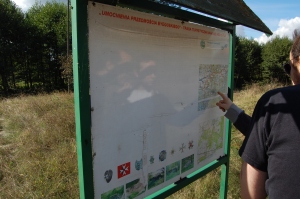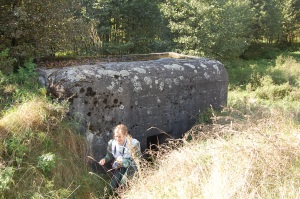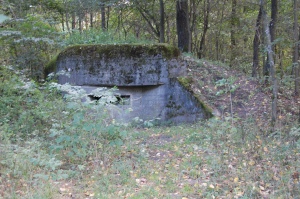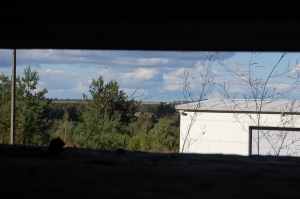One of the convenient things about living in Bydgoszcz is that it’s really quite close to the German border. Immediately before the outbreak of World War II of course, this was far from positive. In August 1939, the border was even closer, just 80km away, close to the city of Piła. So, after the initial attack by the German forces in Westerplatte, at Gdańsk, the Bydgoszcz area was marked as one of the next incursion points as the Germans sought to occupy Poland. Knowing this, the Polish army decided to build defensive bunkers, to help them defend against the attack. Sadly, after a couple of days of being deflected by Polish forces in the area, the German army then changed direction and simply attacked the city from a different angle and successfully took it. The result of this tragic end though, is a series of extraordinarily well preserved bunkers, located in and around the small village of Zielonczyn, half way along the rural road from Bydgoszcz to Nakło nad Notecia. Fortunately for me, one of my colleagues grew up and still lives today in the village. He offered to show me and some of my other colleagues around. So around lunch time, after an early bite to eat at the Family Milk Bar (Rodzinny Bar Mleczny) on Ulica Dworcowa, 5 of us jumped on the train for the short ride to the west.
From the station, such that it is, we had been directed to cross the tracks and walk along the track beside the meadows, to find the first bunker. After being attacked by errant frogs and harassed by stray butterflies in the afternoon sun, we arrived at the site of the first bunker. But, in spite of frantic searching on google maps and being quite certain we were in the right place, we were defeated. Somewhat disappointed, we decided to head towards the second bunker, across the railway line.
As we reached the other side, we found our first bunker! Next to bunker number 2 was a huge plaque, installed by the government, so that people could learn more about the bunker system and the history of the site. Sadly, sunlight had bleached literally all of the writing off of the board. On the plus side though, there was still a map, showing us which direction to find more bunkers in. First a look inside.

The next bunker, just tens of metres away, was located in someone’s garden. Our guide, Piotr rang the doorbell and asked if we could take a look. The homeowner kindly allowed us to have a look around. ‘His’ bunker had now been turned into a storage outhouse, which was a novel idea. It was larger than the previous one and this time the gun sight was pointed in a different direction, towards the railway line. Evidently Polish forces had been expecting the Germans to attack on a number of fronts.
From here we continued on up in to the trees, where there was something even more remarkable – a further bunker and a fully restored trench. Piotr told us that he knew the archaeologist who had supervised the reconstruction around 6 years ago and that he had painstakingly ensured that the trenches were reconstructed along the same line and depth as the originals. There was also a plaque here – this one protected from the sun’s rays – telling us more about the trenches.
It was a fascinating experience. We also learned that, in the years leading up to war, Poles and Germans had lived side by side all over this area of the country. They had their own schools, churches and other public buildings. There were no serious problems to this point, but many of the German citizens here allegedly sabotaged the Polish defense effort as the war begun. It’s difficult to comprehend – as so much of what you learn of the war in Poland is. Regardless, it was a thoroughly interesting day out.















